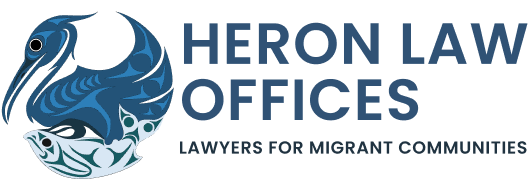








Let’s Get in Touch
Subscribe to Our Newsletter
Stay informed with our latest news and commentary.
Recent Blog Posts
The Play is Under Review: A Closer Look at IRCC’s Policy Playbook on Automated Decision Making (Pending Feature)
Over the next several weeks, I’ll be doing a series of shorter blog posts on IRCC’s Policy Playbook on Automated Support for Decision-making (2021 edition).
New Year, New Me – Gratitude + the Canadian Immigration Issue I’m Tackling in 2022
I have a tradition every year of listening to the same Death Cab for Cutie song, The New Year. “So this is the new year
Why VESPA’s Internal Only Instructions are Exhibit “A” to Our Two-Tiered Temporary Resident System
Much like we knew very little about #Chinook until recently, we are now learning more about a March 2020 Program Delivery Instruction [PDI] (with a
Predictive/Advanced Analytics + Chinook – Oversight = ?
In September 2021’s issue of Lexbase, my mentor Richard Kurland, provides further insight into what happens behind the scenes of Immigration, Refugees, and Citizenship Canada
Subscribe to Our Newsletter
Stay informed with our latest news and commentary.
Tags
My Value Proposition
My Canadian immigration/refugee legal practice is based on trust, honesty, hard-work, and communication. I don’t work for you. I work with you.
You know your story best, I help frame it and deal with the deeper workings of the system that you may not understand. I hope to educate you as we work together and empower you.
I aim for that moment in every matter, big or small, when a client tells me that I have become like family to them. This is why I do what I do.
I am a social justice advocate and a BIPOC. I stand with brothers and sisters in the LGBTQ2+ and Indigenous communities. I don’t discriminate based on the income-level of my clients – and open my doors to all. I understand the positions of relative privilege I come from and wish to never impose them on you. At the same time, I also come from vulnerability and can relate to your vulnerable experiences.
I am a fierce proponent of diversity and equality. I want to challenge the racist/prejudiced institutions that still underlie our Canadian democracy and still simmer in deep-ceded mistrusts between cultural communities. I want to shatter those barriers for the next generation – our kids.
I come from humble roots, the product of immigrant parents with an immigrant spouse. I know that my birth in this country does not entitle me to anything here. I am a settler on First Nations land. Reconciliation is not something we can stick on our chests but something we need to open our hearts to. It involves acknowledging wrongdoing for the past but an optimistic hope for the future.
I love my job! I get to help people for a living through some of their most difficult and life-altering times. I am grateful for my work and for my every client.
Awards & Recognition

Canadian Bar Association Founders' Award 2020

Best Canadian Law Blog and Commentary 2019

Best New Canadian Law Blog 2015
Best Lawyers Listed 2019-2021

2023 Clawbies Canadian Law Blog Awards Hall of Fame Inductee

Best Canadian Law Blog and Commentary 2021

Canadian Bar Association Founders' Award 2020

Best Canadian Law Blog and Commentary 2019

